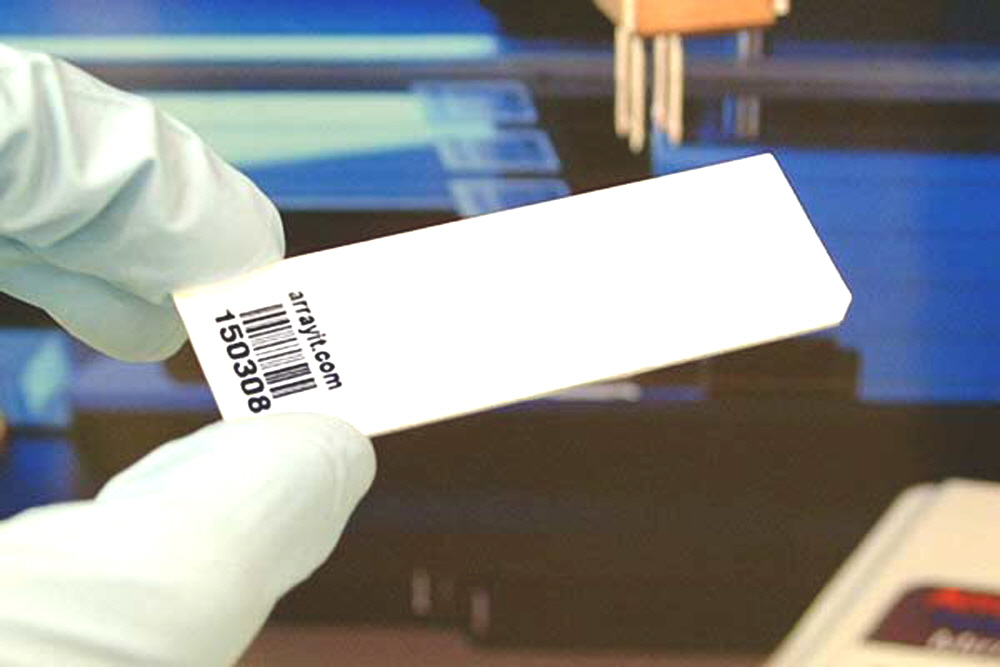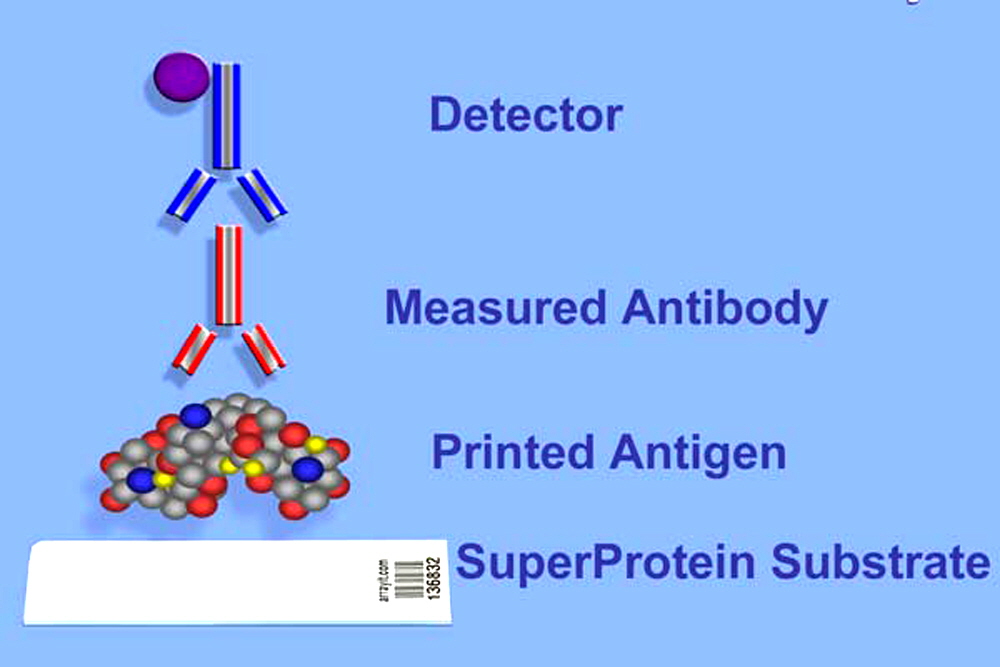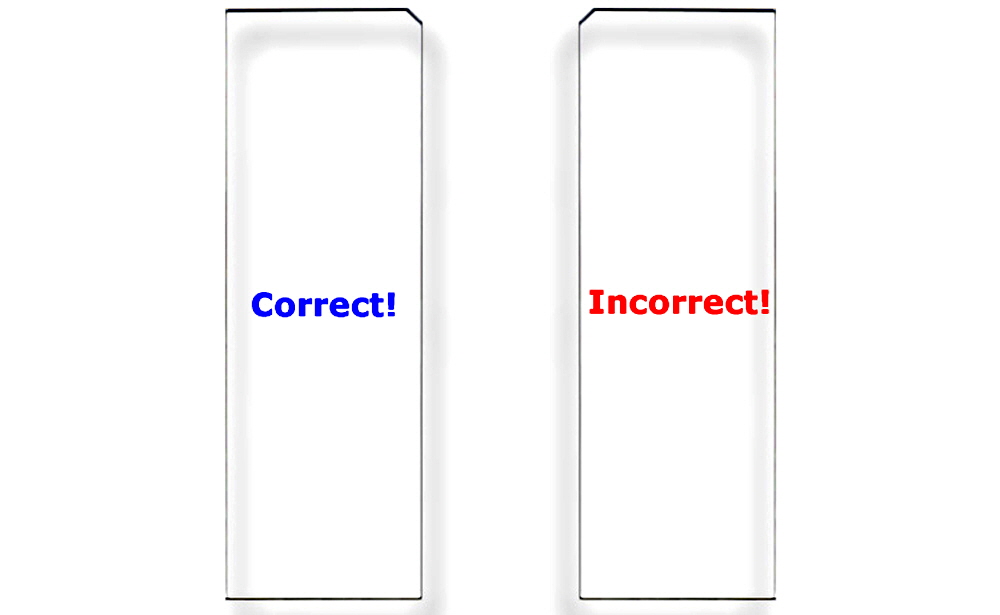SuperProtein Membrane Coated
Data Sheet
![]() Shop this product in our online store
Shop this product in our online store

ArrayIt® has developed a sophisticated microarray substrate coated with a hydrophobic polymer for a wide spectrum of protein microarray applications. The 150 µm thick layer of hydrophobic polymer is bound to an atomically flat glass substrate slide for high precision and uniformity. The ultimate surface for protein microarray applications provides small printed spots, strong signals, and ultra-low background. Use in conjunction with the SpotWare Colorimtric Scanner and SuperNitro Microarray Substrates to transform your traditional filter assays into a microarray format for highly affordable research and in vitro diagnostics.
Table of Contents
- Product Description
- Example Protocol
- Short Protocol
- Complete Protocol
- Ordering Information
- Warranty
Product Description
The SuperProtein surface provides a white micro porous polymer laminated to a SuperClean substrate at an affordable price. The surface binds proteins via efficient hydrophobic interactions. This unique hydrophobic surface is perfect for spotting multiple samples, multiple times over multiple substrates with 1 low volume loading of sample using the 946 Micro Spotting Device. SuperProtein Substrates are manufactured in class 1 cleanrooms. Cleanroom manufacture eliminates contamination of the microarray surface with particulates, proteases, nucleases and other contaminants that impair the quality of microarray experimentation.
SuperProtein can be used for the following protein microarray applications:
- Protein – Protein
- Protein – Antibody
- Protein – Antigen
- Protein – DNA
- Protein – RNA
- Protein – Drug
- Protein – Carbohydrate
- ELISA in a microarray format
Multiplexing Reaction Tools
SuperPVDF slides are compatible with the multiwell reaction tools, AHC1x16, AHC1x24, AHC4x24, and MMH4x24. Using these tools and the right microarrayer programming it is possible to run up to 24 separate microarray experiments on a single slide.
Users will appreciate the following features of SuperProtein Substrates:
- Manufactured in state-of-the-art class 1 microarray cleanrooms
- Free of particulate, protease and nuclease contamination
- Standard 1” x 3” size (76 x 25 x 1.2 mm including hydrophobic polymer)
- Corner chamfer (upper right corner) for unambiguous orientation
- High efficiency hydrophobic protein coupling
- Supports both contact printing and ink-jet printing
- No cross-linking or baking required for coupling
- “Zero” background fluorescence when used with the SpotWare Scanner
- Binds proteins, enzymes, antibodies, receptors, antigens, and more…
- Print pure proteins, recombinant proteins and cellular extracts
- Uniform feature size
- 25 substrates per box
- Anti-static and impact resistant packaging
- 1 year shelf life at room temperature
Example Protocol:
Assay for Detection of Antibodies to Target Antigens

Figure 1. Antigens are printed on SuperProtein surface. Patient serum containing measured antibody is incubated to the microarray. After reaction a secondary antibody containing enzyme linked conjugate is incubated and subsequently developed to allow colorimetric detection of the measured antibody. The use of an incorporated internal calibration curve for each subclass of antigen/antibody on the microarray provides a unique advantage over current immunoassays protocols, where the standard curve and the sample are processed in separate tubes or wells.

Figure 2. Correct Substrate Orientation. Shown is a graphic of two ArrayIt® Microarray Substrates, showing the correct and incorrect orientation for use. In the correct orientation (blue graphic), the chamfer will be located in the upper right corner and samples should be printed on the side facing upward, which is the same side that contains the word “Correct!”. In the incorrect orientation (red graphic), the chamfer will be located in the upper left corner, placing the backside facing upward, which is the side that contains the word “Incorrect!”. Only one side of ArrayIt® Microarray Substrates is suitable for printing. Please print on the correct side only.
Short Protocol:
- Print Antigens into a microarray using a SpotBot Protein Edition Microarrayer.
- Wash using PBS and Block using SuperProtein Blocking Buffer.
- Perform binding reaction.
- Wash with PBS.
- Perform reaction with secondary labeled conjugated antibody.
- Wash.
- Develop by enzymatic reaction.
- Scan with SpotWare and analyze the microarray.
Complete Protocol:
1. Print purified proteins suspended in PBS at 0.1-1 µg/µl as a final concentration from an MMP384 microplate with no more than 15 µl per well with a SpotBot Protein Edition Microarrayer, NanoPrint Protein Microarrayer or compatible device. A 50kD protein at 1 µg/µl concentration has a concentration of 20 µM. Assuming a 30% coupling efficiency, a 20 µM protein will produce a target density of 1011 proteins per mm2 of substrate. Proteins retain binding and enzymatic activity on the surface. Printed microarrays should be stored unprocessed at 4C to protect coupled molecules. Processing should be performed just prior to use for best performance.
2. Wash printed microarrays by adding 400 ml of 1X PBS in a High Throughput Wash Station and wash with gentle agitation for 15 minutes. Remove printed microarray and spin dry for 10 seconds using a Microarray Centrifuge. Using 4 ul for every square centimeter of coverslip of SuperProtein blocking buffer and incubate for 1 hour and then wash for 5 minutes with PBS using a High Throughput Wash Station and spin dry.
3. Perform binding reactions in blocking buffer plus primary antibody or control sample diluted 1:1,000. Samples can be incubated as a droplet on the printed microarray, underneath a cover slip, or in a micro-fluidics chamber. A 60-minute incubation at room temperature is usually sufficient to obtain a strong signal. Reactions are also performed by pipetting 10 L defined volume of sample or control (primary antibody) into Petri dish in 10 ml of blocking buffer.
4. Appropriately discard the reaction sample or control solutions and wash the slides in 1X PBS, 3 times at 10 minutes each in a High Throughput Wash Station.
5. React microarray with an enzyme conjugated labeled secondary antibody for 1 hour (e.g. goat anti-human IgG-AP). Use a dilution of 1:1000. Samples can be incubated as a droplet on the printed microarray, underneath a cover slip, or in a micro-fluidics chamber. A 60-minute incubation at room temperature is usually sufficient to obtain a strong signal.
6. Wash away secondary antibody using High Throughput Wash Station and 1X PBS, 3 times for 10 minutes each.
7. Use appropriate enzymatic developer. For quantitative work, pre-determine development time by conducting pilot study. It is important that all microarrays to be compared are developed by the same time procedure. It is not always necessary to see signal by eye, the SpotWare Colorimetric Microarray Scanner can detect signals that are invisible to the naked eye.
8. To stop further color development, immerse the microarrays in distilled water 2 minutes. Spin the slides dry in an ArrayIt Brand Microarray Centrifuge. Microarrays are now ready to scan in the SpotWare Colorimetric Microarray Scanner.
Scientific Publications
Click here for recent scientific publications using ArrayIt® brand SuperProtein Microarray Substrates from Arrayit International, Inc.
Recommended Equipment and Reagents
NanoPrint™ 2 Microarrayers
SpotBot® 4 Personal Microarrayers
Microarray Hybridization Cassettes
High Throughput Wash Station
Microarray High-Speed Centrifuge
Protein Printing Buffer
BlockIt™ Blocking Buffer
Microarray Air Jet
Microarray Cleanroom Wipes
PCR Purification Kits
SuperProtein Blocking Buffer
Micro-Total RNA Extraction Kit
MiniAmp mRNA Amplification Kit
Indirect Amino Allyl Fluorescent Labeling Kit
Universal Reference mRNA
Green540 and Red640 Reactive Fluorescent Dyes
Hybridization Buffers

